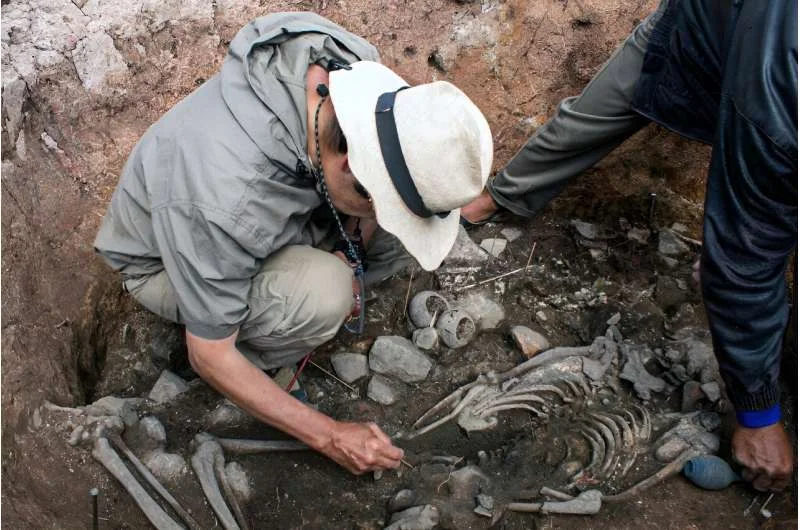A team of Japanese and Peruvian archaeologists discovered a 3,000-year-old priest’s tomb containing ceramic gifts in northern Peru. “We recently discovered the tomb of a 3,000-year-old figure at the Pacopampa archaeological site in the Cajamarca region, 900 kilometers (560 miles) north of Lima,” archaeologist Juan Pablo Villanueva told AFP on Saturday.
“He is one of the first priests in the Andes to offer a series of offerings,” said the researcher, adding that “the context of the burial remains intact.”
The trunk with partially bent lower limbs was oriented from south to north. On the west side of the tomb were small spherical ceramic bowls, carved bone spatulas and other gifts. Two seals were also found, one with an anthropomorphic face and the other with a jaguar. The corpse and victims were covered with at least six layers of ash and earth. The tomb is circular, three meters in diameter and one meter deep (10 feet by 3.3 feet).
“The find is extremely important because he is one of the country’s first priests to inspect temples in the northern Andes,” Japanese archaeologist Yuji Seki, who has worked at the site for 18 years, told AFP.
Researchers believe the priest lived around 1000 BC.
Seki said the finding helps to show that “strong leaders emerged in the Andes” even long ago. In September 2022, the same group of archaeologists discovered the tomb of a man more than 3,000 years old, whom they named the “Priest of Pututo”, with musical instruments made of seashells.
Pututos or pututus are conch-like shells that ancient Peruvians may have used to make trumpet-like sounds. The 2,500-metre (8,200 ft) Pacopampa site contains nine monumental ceremonial buildings made of carved and polished stone.
Other tombs found in the same area include the “Lady of Pakopampa” tomb found in 2009 and the two “Jaguar Snake Priests” discovered in 2015. B.C. They are thought to belong to 700-600 years. Archaeologists from the National Museum of Ethnology in Japan and the National University of San Marcos in Peru are participating in the work at Pacopampa. Source
Source: Port Altele
